Old Galway
THE FISHMARKET
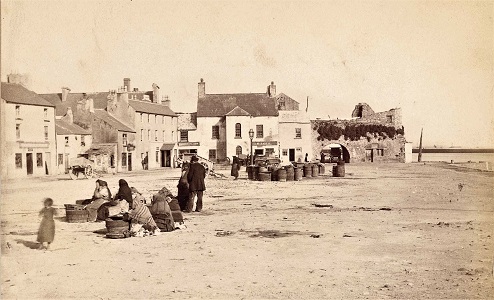
by Tom Kenny
The Village of Claddagh was a unique collection of thatched cottages arranged in a very random fashion, a place apart, occupied by a few thousand souls. They had their own customs, spoke mainly in Irish, intermarried each other, elected their own king and had a code of laws unique to the village. Virtually the entire male population was involved in fishing, but when they landed their catch, the women took over and they were the ones who went out and sold the product.
Many of these women had their own regular beat as they would go from door to door selling. Some would have their own private customers that they supplied but for others, the fish market was where they congregated and sold their fish. In earlier times, it was located in Bridge Street where there was a crane used for weighing the fish but, to say the least, conditions were primitive there.
ARMS OF THE CITY
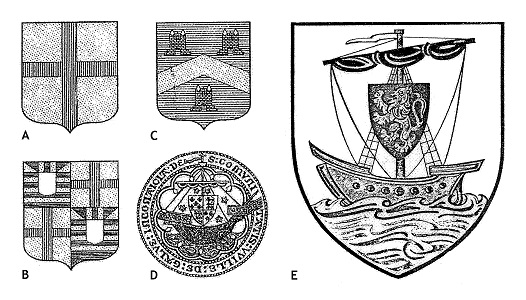
by Tom Kenny
A coat of arms is described as a heraldic visual design on an escutcheon surcoat or tabard. The coat of arms on the escutcheon forms the central element of the full heraldic achievement which in its whole consists of a shield, supporters, a crest and a motto. A coat of arms is traditionally unique to the armiger.
Since its foundation in the early 13th century, the town of Galway has used at least five different coats of arms. The first three of these did not, as far as is known, belong to the town proper but were used by townspeople for official purposes in the absence of specific town arms.
The earliest set, (A) comprising a red cross on a gold shield dates from about 1270 onwards and was those of the De Burgo family, Earls of Ulster. In 1368, the De Burgo possessions passed, by marriage, into the control of Edward Mortimer, Earl of March (in England) and Galway began to use his arms, now combined with those of his wife, through whom the earldom had come into his possession. In heraldry, the usual manner of representing an alliance of two great families is by dividing the shield into four parts and placing the respective arms in the opposite quarters. In this instance, (B) the upper left and bottom right quarters contain the original De Burgo arms and the other two quarters show the Mortimer arms (a series of horizontal bars of gold and blue with a superimposed plain silver shield).
LYDON’S RESTAURANT

by Tom Kenny
In October 1935, the local papers reported that Mr. Thomas Lydon was about to open a super restaurant, installed with the latest conveniences, over his well-known confectionery shop on Shop Street. “A masterpiece of Modernity. Its equipment is the most up-to-date procurable including a Major ‘Esse’ Cooker, Electric Magrini Toaster, Scott Electric Hot Plate, Cold Storage room and a Frigidaire Ice Cream cabinet. The entrance to the restaurant is through the handsome shop premises which have also been modernized and where the aromas of freshly made bread buns and cakes was mouth-watering. The work of the restaurant, which could seat 200 people, is carried on by a well-trained staff of about thirty”.
SAINT PATRICK’S CHURCH
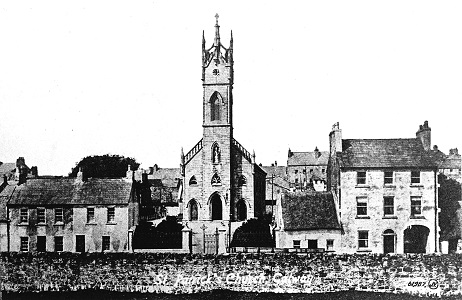
by Tom Kenny
This photograph of St. Patrick’s Church and part of Forster Street was taken from the Galway/Clifden Railway Line overlooking James Mahon’s Field where the circuses used to be long ago. It was taken c.1920.
When, in May 1836, Fr. Bartholomew Roche began building St. Patrick’s Church, it was well outside the city proper. It extended from the West Bridge to Grealishtown, numbered some 7,000 souls and was known as Bohermore Parish. The church opened for worship in 1837 but two years later, on the night of the ‘Big Wind’ the roof was blown off and Fr. Roche had to go on another begging tour. The repairs took some time but eventually the new church, though far from complete, was opened on January 11th 1842. It was blessed by the Bishop, Fr. Roche said the mass and the sermon was delivered by the famous temperance reformer, Fr. Theobald Matthew.
ST. PATRICK’S NATIONAL SCHOOL

by Tom Kenny
On January 15th 1827 two Patrician Brothers, Paul O’Connor and James Walsh took up residence in Lombard Street and set up the Monastery School. The attendance on that first day was 300 boys, many of whom had little interest in learning because they were poor and hungry. So the Brothers set up The Poor Boy’s Breakfast Institute in May 1830. It continued seven days a week, 365 days a year for many years after the founder’s time. The breakfast consisted of porridge with molasses or treacle and during the Famine, they fed 1,000 boys every day. The ‘Old Mon’ became a vital cog in education in Galway.
In 1862, the Brothers took over a house on Nun’s Island and converted it into a school which provided national and secondary education. Some of the funds for this ‘Middle Class Seminary’ were provided by the Bishop so the schools became known locally as ‘The Bish’ and ‘The Sem’.
LYNCH’S CASTLE
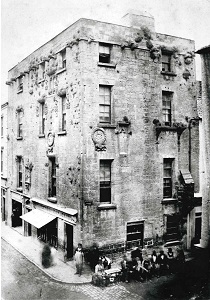
by Tom Kenny
Lynch’s Castle is one of the finest surviving medieval town-houses, one of the best known examples of pre-Renaissance architecture in Ireland. It is essentially a two-period structure, the original sixteenth castle was square in plan and was limited to the space now occupied on the ground floor by the vestibule of the bank. That portion to the west on Shop Street was added c.1808. The extension is evident in the masonry of the exterior of the building, and the window hood-moulds of this section are very different in the character of their detail and carving from the original work. It is likely that the whole interior was remodelled and the storeys altered at this time, the window hood-moulds, the panels, the gargoyles etc. being moved to their present positions.
As a result, the original location of these features can only be conjectured. An examination of the moulding profiles and other ornamental details suggests that many of them belonged to the original castle, or were the product of the same workshop. They are finely carved from local limestone and in their richness and abundance of detail bear witness to the wealth of Galway merchants in the early 16th century.
FRANK McDONAGH & Co.
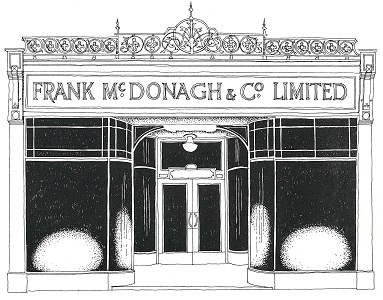
by Tom Kenny
Frank McDonagh and Company were wholesale and retail drapers and outfitters that opened in Williamsgate Street in 1883. In early advertisements, they described themselves as “Successors to M. Hennessy, the house for original Claddagh cloaks as supplied to the Royal family”.
They were always heavy advertisers, for Christmas at the turn of the last century, they were pushing ‘ladies chatelains and handkerchief bags, fur necklets at tempting prices, lace collars, ties, gloves, perfumes, cushions, tea cosies etc,, Irish poplin scarves a speciality’. In 1903 they had a major promotion of Irish made goods − Irish-made suits and suitings, dress and costume cloths, umbrellas and waterproofs, hats and caps, shirts and collars, hosiery and underwear, ties in great variety, corsets and underclothing, rugs and shawls.
Lifesaving in Galway
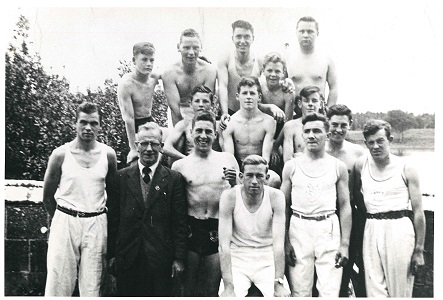
by Tom Kenny
Organised water safety in Ireland really began in Milltown Malbay, Co Clare in the 1930s when a lady drowned there. This galvanised the local community into forming a Water Safety Association to help swimmers who got into trouble. The idea spread through Co Clare and eventually to the whole country. The national water safety section, set up by the government, was run by the Red Cross.
In Galway the Corporation appointed a life guard in Salthill; Christy Dooley, Bobby Molloy and Michael Roche were among the early people who held that post. The swimming clubs began to organise classes with, notably, Jimmy Cranny and Christy Dooley providing the instruction. The Presentation, Taylor's Hill, the Jes and the Bish trained and organised teams for school competitions. More and more people were qualifying as life savers.
